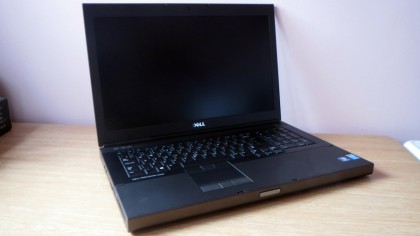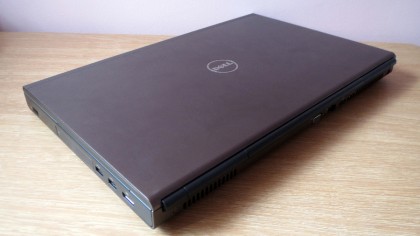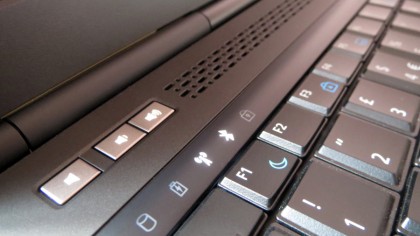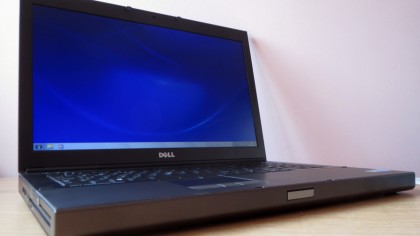Why you can trust TechRadar
Benchmarks
PCMark 8
- Creative battery test, High Performance, 100% screen: 2hr 35m
- Creative battery test, Balanced, 50% screen: 2hr 54m
- Creative battery test, Power Saver, 25% screen: 4hr
3DMark
- Ice Storm: 82,461
- Cloud Gate: 13,879
- Fire Strike: 5,208
Cinebench R11.5
- OpenGL: 27.33fps
- CPU: 7.29
Cinebench R15
- OpenGL: 85.62fps
- CPU: 671cb
The Core i7-4800MQ runs at 2.7GHz and hits a mighty Turbo Boost peak of 3.7GHz, and it's paired with 16GB of RAM. That fearsome specification delivered in benchmarks – this laptop's Cinebench R15 CPU score of 671cb easily beat the 609cd of the Precision M4800, and in the older Cinebench R11.5 benchmark the M6800 hit 7.29 – better than every machine mentioned here.

The Nvidia Quadro K3100M is based on the older GTX 680 desktop GPU with a reduced specification, and it's ISV certified. It swatted away rivals: in Cinebench R15's OpenGL test it hit 85.62fps – almost twenty frames ahead of the Precision M4800, and double the pace of the M3800.
In the SPECViewPerf benchmark the M6800 led by a similar margin, and it outpaced consumer competition too – its result of 5,208 in 3DMark's Fire Strike is three times the speed of rivals. The M6800 isn't able to match desktop workstations – Nvidia's top desktop Quadro cards have almost four times as many stream processors – but it's still as much professional power as you'll find in a laptop.

The 750GB hard disk has decent space, but it's slow. In sequential read and write tests the disk hit 118MB/s and 108MB/s, with a boot time of 39s – all slower than SSD-based systems.
Quiet performer
Despite the copious power, Dell has kept the noise down. When handling simple tasks the M6800 was barely audible, and the fans only produced a little noise when the system was stress-tested. It's easily drowned out by quiet offices, and the internal temperatures remained impressively low.

We ran PCMark 8's Creative battery test in Balanced mode and the M6800 lasted for six minutes short of three hours – and just five minutes shy of the M4800's longevity. We could only eke four hours from the Dell when we used Power Saver mode and dialled the screen down to 25% brightness. We never expect high-end workstations to last long, and that's the same here – you'll be lucky to manage even a half-day away from the mains.
Sensible screen
The screen is sensible: 1080p, matte and non-touch. We expect high quality from a machine of this standard, but benchmark results were varied – this panel has fantastic colour accuracy, which is a boon for graphical work, but it's let down when it comes to contrast.

The average and maximum Delta E figures of 1.26 and 3.68 are the high point. They're better accuracy figures than most laptops, and they're bolstered by a colour temperature of 6,352K – not far enough from the 6,500K ideal figure to cause any issues. The sRGB coverage of 93.4% is excellent, too – although the M4800's IGZO QHD+ version was better.
The 257cd/m2 brightness is less impressive, and the contrast ratio of 734:1 is similar – good, but not great.
Mike has worked as a technology journalist for more than a decade and has written for most of the UK’s big technology titles alongside numerous global outlets. He loves PCs, laptops and any new hardware, and covers everything from the latest business trends to high-end gaming gear.
